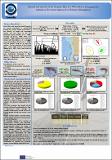Por favor, use este identificador para citar o enlazar a este item:
http://hdl.handle.net/10261/325445COMPARTIR / EXPORTAR:
 SHARE
BASE SHARE
BASE
|
|
| Visualizar otros formatos: MARC | Dublin Core | RDF | ORE | MODS | METS | DIDL | DATACITE | |

| Título: | Discard and by-catch of the shrimper fleet in a West African fishing ground: towards an Ecosystem Approach to Fisheries Management. |
Autor: | Duque-Nogal, Verónica; García-Isarch, Eva; Romero, Zeneida; Expósito-Martínez, Pablo | Palabras clave: | Centro Oceanográfico de Cádiz Pesquerías shrimper fleet discard by-catch West African fishing ground |
Fecha de publicación: | sep-2016 | Citación: | I Congreso Biodiversidad y Conservación de la Naturaleza: Divulgación y transferencia del conocimiento entre los distintos sectores de la sociedad.. (29/09/2016 - 30/09/2016. Almería (España)). 2016. -. En: , . 2016: - | Resumen: | It is widely recognized that discards and overexploitation produced by intense fishing activities are not only a risk for fisheries sustainability but also the cause of the marine resources decline, this involving significant changes in the trophic webs and habitats. This is especially the case of bottom trawl fisheries, and more specifically shrimp trawls, which produce average discards that can be higher than 70% of catches. A Spanish shrimp fishery has been traditionally developed in West African fishing grounds, being especially relevant in Mauritanian waters, due to their high productivity. Since 2010, discards produced by this fishery have been studied from the information obtained through a “Program of scientific observers onboard” carried out by the Spanish Institute of Oceanography (IEO). Two annual observation cycles (2010 and 2014) have been conducted in Mauritania, giving information on catches and discards from a total of 996 (2014) and 1143 hauls (2010). More than 250 species were identified in the discards produced by this fleet. Cluster analyses and multidimensional scaling (MDS) revealed the occurrence of three well-defined assemblages, related to the depth fishery of the three main target species: one coastal shelf assemblage, in fishing depths of the southern pink shrimp Penaeus notialis (30-60 m depth), one slope assemblage in fishing depths of the deep-water rose shrimp Parapenaeus longirostris (90-300 m) and a deep slope assemblage in fishing depths of the striped red shrimp Aristeus varidens (300-900 m). The structure of each assemblage is presented in this work. Quantifying the bycatch and discard and identifying the main species are key steps to address a solution to effectively reduce their effects and to maintain healthy marine ecosystems. | URI: | http://hdl.handle.net/10261/325445 |
| Aparece en las colecciones: | (IEO) Comunicaciones congresos |
Ficheros en este ítem:
| Fichero | Descripción | Tamaño | Formato | |
|---|---|---|---|---|
| Póster-Duque et al-26-09-16.pdf | 747,03 kB | Adobe PDF |  Visualizar/Abrir |
CORE Recommender
Este item está licenciado bajo una Licencia Creative Commons

